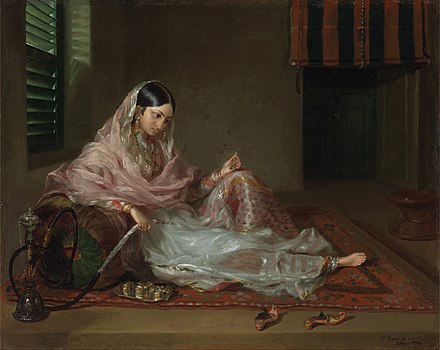As an artist deeply fascinated by the interweaving of culture and the stories of bygone eras, my installation “Knitting (Bunon)” serves as a tribute to the invisible ways of life and the lost days they encompass. Created for my DNSEP diploma at ISBA in 2022, this piece draws its inspiration from the delicate intricacies of lace and the historical richness of Dhakai Muslin. Muslin, a light and transparent fabric, was once a significant cultural and economic artifact of Dhaka, Bangladesh, in the 17th and 18th centuries.

The Historical Significance of Dhakai Muslin
Dhakai Muslin, often hailed as the finest cloth in all of India by 16th-century English traveler Ralph Fitch, held a pivotal place in the textile trade of Mughal Bengal. This exquisite cotton fabric of plain weave ranged from delicate sheers to coarse sheeting and was renowned worldwide. Its production was a laborious process involving ginning, spinning, and weaving, often during the rainy season to enhance the yarn’s elasticity. The fabric’s history is marred by the brutal colonial policies of the East India Company, which sought to suppress the local muslin industry to promote British-produced cloth. Despite these challenges, Dhakai Muslin’s legacy endures, with ongoing efforts in Bangladesh and West Bengal to revive this lost art.

Transition to Paper: A Personal and Cultural Medium
Unable to use muslin for my installation, I turned to a medium deeply rooted in my personal and cultural experiences: light white paper. In Bangladesh, this paper has traditionally been used to decorate homes for small parties and cultural festivals such as Pohela Boisakh. As a student at the Institute of Fine Arts in Chittagong, I frequently used this paper to adorn our campus and create cards for various celebrations. Its affordability and ease of manipulation made it an ideal choice for my artistic expression.
The Meditative Process of Paper Cutting and Folding
The process of cutting and folding paper has always been a source of solace for me, offering a meditative escape from stress. Without any preplanning or layout, I love to fold the paper and cut it, unveiling unique forms with each creation. This spontaneity and the resulting variations are what make this medium so captivating. For this installation, I meticulously cut several pages of paper, each bearing its unique design, and glued them together to form a 10-meter-long piece. This length mirrors the traditional dimensions of muslin, which was often woven in lengths of 10 to 30 meters, and resonates with the muslin reserved in the British Museum, which is 10 meters long.


Influences and Inspirations
The concept of transformation, as explored by artists like Golnaz Payani, deeply influences my work. Her focus on fragile, soft, and elongated objects, particularly those made from fabric, embroidery, and paper, aligns with my own artistic vision. Traditional Iranian floral designs, with their intricate beauty, also serve as a source of inspiration for me.
Capturing the Essence of Muslin
Through “Knitting (Bunon),” I aim to capture the richness and narrative depth of muslin, translating its delicate elegance and historical significance into a contemporary form. Each cut and fold of the paper symbolizes the meticulous craftsmanship and cultural heritage of muslin, while also reflecting my personal connection to this traditional art form. This installation is not just a visual representation but a tactile journey through history, culture, and personal memory.

A Celebration of Dhakai Muslin and Personal Artistic Journey
In essence, “Knitting (Bunon)” is a celebration of the lost art of Dhakai Muslin, an homage to its artisans, and a reflection of my own artistic journey. It embodies the delicate balance between fragility and resilience, tradition and modernity, and the past and the present. Through this work, I hope to evoke a sense of wonder and appreciation for the cultural narratives that shape our identities and connect us to the stories of the past.
The Meditative Process and Broader Themes
By immersing myself in the act of knitting with paper, I not only honor the craftsmanship of Dhakai Muslin but also explore the broader themes of transformation and continuity within art and culture. The repetitive motions of cutting and folding mirror the traditional weaving techniques, creating a bridge between the ancient and the contemporary. This meditative process allows me to channel the spirit of muslin’s history while infusing it with new life and meaning.
Conclusion: A Dialogue Between Past and Present
Ultimately, “Knitting (Bunon)” is more than an installation; it is a dialogue between the past and the present, an exploration of cultural memory, and a testament to the enduring power of art to connect us across time and space. Through this work, I invite viewers to contemplate the intricate web of stories that shape our world and to find beauty in the delicate interplay of tradition and innovation.



Leave a Reply